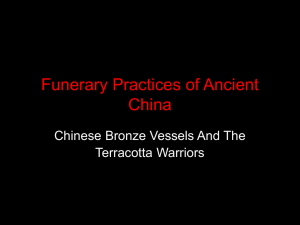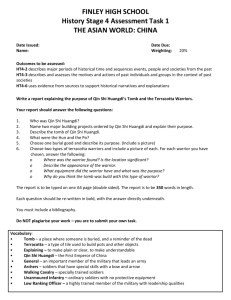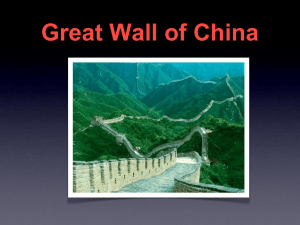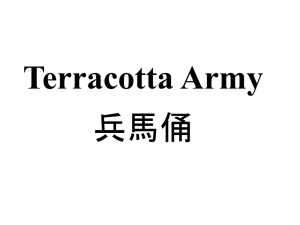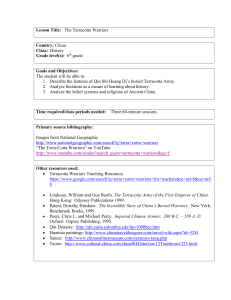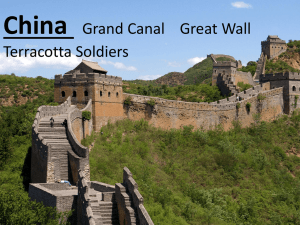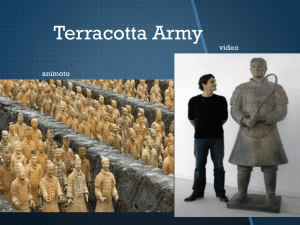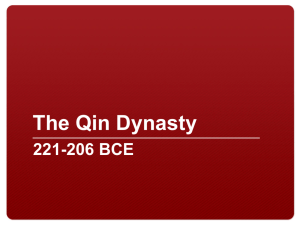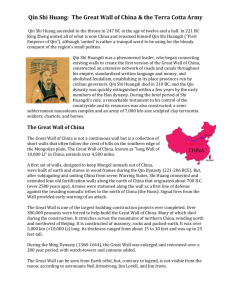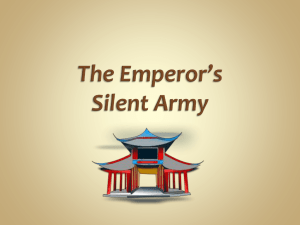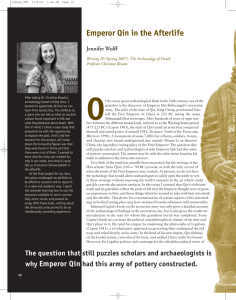Qin Shi Huang
advertisement
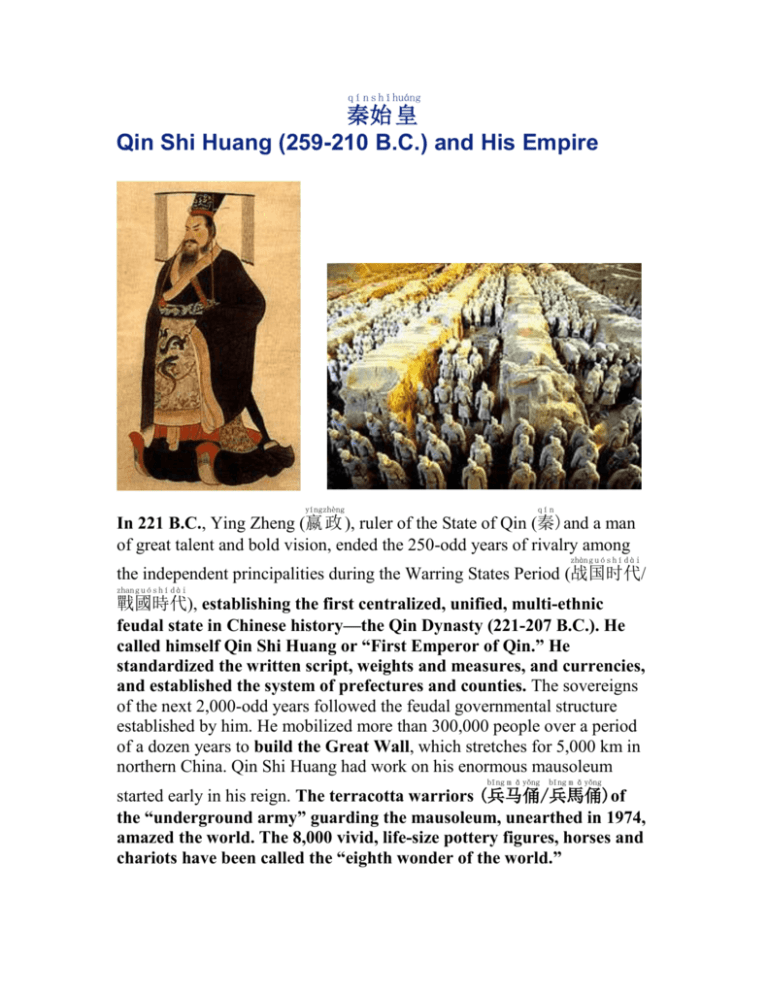
q í n s h ǐ huáng 秦始 皇 Qin Shi Huang (259-210 B.C.) and His Empire yíngzhèng qín In 221 B.C., Ying Zheng (嬴 政 ), ruler of the State of Qin (秦)and a man of great talent and bold vision, ended the 250-odd years of rivalry among zhàn g u ó s h í d à i the independent principalities during the Warring States Period (战国时代/ zhan g u ó s h í d à i 戰國時代), establishing the first centralized, unified, multi-ethnic feudal state in Chinese history—the Qin Dynasty (221-207 B.C.). He called himself Qin Shi Huang or “First Emperor of Qin.” He standardized the written script, weights and measures, and currencies, and established the system of prefectures and counties. The sovereigns of the next 2,000-odd years followed the feudal governmental structure established by him. He mobilized more than 300,000 people over a period of a dozen years to build the Great Wall, which stretches for 5,000 km in northern China. Qin Shi Huang had work on his enormous mausoleum bīng m ǎ yǒng bīng m ǎ yǒng started early in his reign. The terracotta warriors (兵马俑/兵馬俑)of the “underground army” guarding the mausoleum, unearthed in 1974, amazed the world. The 8,000 vivid, life-size pottery figures, horses and chariots have been called the “eighth wonder of the world.” Questions: 1. How long did it take to complete Qinshihuang’s mausoleum? a. 9 years b. 19 years c. 29 years d. 39 years 2. In what year were the Terracotta Warriors first unearthed? a. 1954 b. 1964 c. 1974 d. 1984 3. Who were the first to discover the Terracotta Warriors? a. archeologists b. farmers c. soldiers d. botanists 4. How many pits of the Terracotta Warriors were found in Xi’an? a. 1 b. 2 c. 3 d. 4 5. When did Qinshihuang become the king of the State of Qin? a. 247 BC b.237 BC c. 239 BC d. 221 BC 6. When did Qinshihuang unify China? a. 247 BC b. 237 BC d. 210 BC c. 221 BC 7. How many states were there before Qinshihuang unified China? a. 5 b. 6 c. 7 d. 8 8. How long had Qinshihuang lived? a. 39 b. 49 d. 69 c. 59 9. What is used to fill underground rivers in Qinshihuang’s mausoleum? a. well water b. salt water c. spring water d. mercury 10. Which of the following was not standardized by Qinshihuang? a. books b. currencies c. written scripts d. weights & measures 11. Approximately how many life-size terracotta figures were discovered? a. 3,000 b. 8,000 c. 10,000 d. 1 million 12. The terracotta warriors and horses were ranked the _____ Wonder of the Ancient World? a. 5th b. 6th c. 7th d. 8th Answers: 1. d 2. c 3. b 4. c 5. a 6. c 7. c 8. b 9. d 10. a 11. b 12. d
